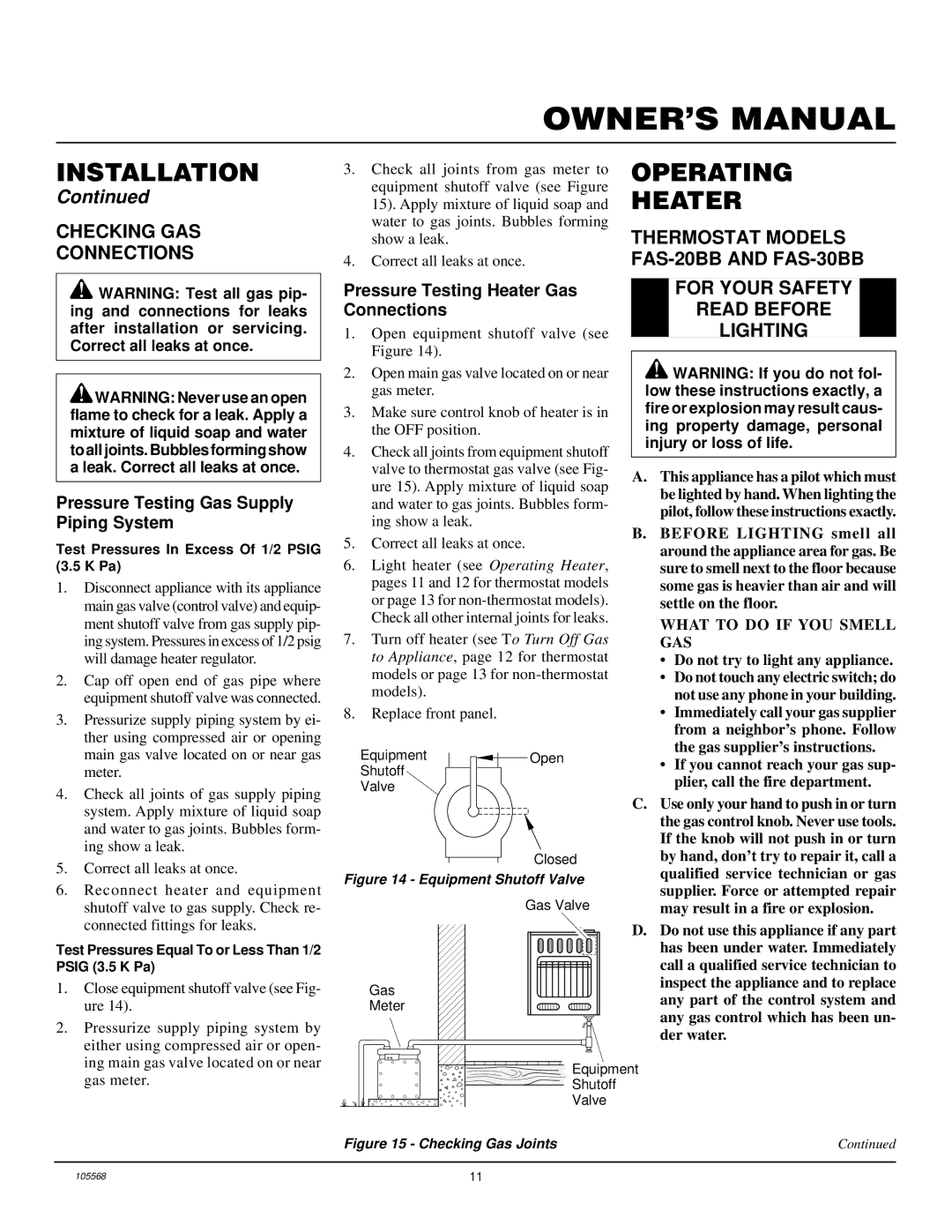FA-30BB, FAS-20BB, FGH-30NGB, FA-20BB, FAS-30BB specifications
Desa FGH-30NGB, FA-20BB, FAS-30BB, FAS-20BB, and FA-30BB represent a compelling lineup of advanced heating solutions, engineered to cater to diverse consumer needs for efficient heating and functionality. Each model stands out with unique features and technologies that set them apart in the competitive market.The FGH-30NGB model is particularly commendable for its innovative design and energy efficiency. It integrates advanced gas burner technology, which ensures optimal heat output while minimizing energy consumption. This model is equipped with an automatic ignition system, adding convenience for users who prioritize ease of use. Additionally, the FGH-30NGB features a robust safety mechanism, including automatic shut-off in case of overheating, which enhances user confidence.
In contrast, the FA-20BB model showcases versatility with its multifaceted heating settings. Ideal for both residential and commercial environments, this model incorporates state-of-the-art electronic controls that allow users to adjust temperatures with precision. The FA-20BB also prioritizes user comfort through its Quiet Mode operation, which significantly reduces noise during heating cycles, making it suitable for quiet settings like bedrooms and libraries.
The FAS-30BB takes technology a step further with its integration of smart features. This model is Wi-Fi enabled, allowing users to control the heater remotely through a mobile app. This capability is particularly advantageous for tech-savvy consumers who wish to manage their heating systems efficiently from anywhere. Moreover, the FAS-30BB boasts a sleek, modern design, making it an aesthetic addition to any space.
Meanwhile, the FAS-20BB offers a compact design without compromising heating power. Ideal for smaller spaces, it combines efficiency with a lightweight build, making it easy to move when needed. Its user-friendly digital interface provides valuable feedback and allows users to easily monitor performance.
Finally, the FA-30BB model caters to those needing a high-performance solution. With dual heating modes, this model stands out in versatility and effectiveness. It utilizes advanced thermal insulation technologies that enhance heat retention, ensuring maximum efficiency.
In conclusion, the Desa FGH-30NGB, FA-20BB, FAS-30BB, FAS-20BB, and FA-30BB models present a broad spectrum of features and technologies that address various heating requirements. From smart technology integration to energy-efficient designs, each model is crafted to offer performance, reliability, and user satisfaction in any setting.

